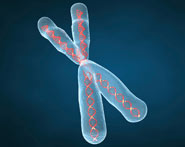


 النبات
النبات
 الحيوان
الحيوان
 الأحياء المجهرية
الأحياء المجهرية
 علم الأمراض
علم الأمراض
 التقانة الإحيائية
التقانة الإحيائية
 التقنية الحيوية المكروبية
التقنية الحيوية المكروبية
 التقنية الحياتية النانوية
التقنية الحياتية النانوية
 علم الأجنة
علم الأجنة
 الأحياء الجزيئي
الأحياء الجزيئي
 علم وظائف الأعضاء
علم وظائف الأعضاء
 الغدد
الغدد
 المضادات الحيوية
المضادات الحيوية|
Read More
Date: 2025-03-02
Date: 2025-04-15
Date: 2025-03-05
|
A. Material
Old tuberculin is a concentrated filtrate of broth in which tubercle bacilli have grown for 6 weeks. In addition to the reactive tuberculoproteins, this material contains a variety of other constituents of tubercle bacilli and of growth medium. A purified protein derivative (PPD) is obtained by chemical fractionation of old tuberculin. PPD is standardized in terms of its biologic reactivity as tuberculin units (TU). By international agreement, the TU is defined as the activity contained in a specified weight of Siebert’s PPD Lot No. 49608 in a specified buffer. This is PPD-S, the standard for tuberculin against which the potency of all products must be established by biologic assay (ie, by reaction size in humans). First-strength tuberculin has 1 TU, intermediate-strength has 5 TU, and second-strength has 250 TU. Bioequivalency of PPD products is not based on the weight of the material but on comparative activity.
B. Dose of Tuberculin
A large amount of tuberculin injected into a hypersensitive host may give rise to severe local reactions and a flare-up of inflammation and necrosis at the main sites of infection (focal reactions). For this reason, tuberculin tests in surveys use 5 TU in 0.1 mL solution; in persons suspected of extreme hypersensitivity, skin testing is begun with 1 TU. The vol ume is usually 0.1 mL injected intracutaneously, usually on the volar aspect of the forearm. The PPD preparation must be stabilized with polysorbate 80 to prevent adsorption to glass.
C. Reactions to Tuberculin
After the tuberculin skin test is placed, the area is examined for the presence of induration no later than 72 hours after placement. It is imperative that a person trained in the accurate reading of these tests examine the area in question. Ery thema alone should not be interpreted as a reactive test result. The Centers for Disease Control and Prevention (CDC) has established three different cut points defining a positive test result, considering both the sensitivity and specificity of the test and the prevalence of tuberculosis in various populations. For patients at the highest risk of developing active disease (eg, HIV-infected persons and people who have had exposure to persons with active tuberculosis), 5 mm or larger of induration is considered positive; larger than 10 mm is considered positive for persons with increased probability of recent infection. This category might include individuals such as recent immigrants from high-prevalence countries, injection drug users, and health care workers with exposure to tuberculosis. For persons at low risk for tuberculosis, 15 mm or larger of induration is considered a positive test result. In an individual who has not had contact with mycobacteria, there is generally no reaction to PPD-S. Positive test results tend to persist for several days. Weak reactions may disappear more rapidly.
The tuberculin test result becomes positive within 4–6 weeks after infection (or injection of avirulent bacilli). It may be negative in the presence of tuberculous infection when “anergy” develops because of overwhelming tuberculosis, measles, Hodgkin disease, sarcoidosis, AIDS, or immunosuppression. A positive tuberculin test result may occasionally revert to negative upon isoniazid (INH) treatment of a recent converter. After Bacillus Calmette-Guérin (BCG) vaccination, people convert to a positive test result, but this may last for only 3–7 years. Only the elimination of viable tubercle bacilli results in reversion of the tuberculin test result to negative. However, persons who were PPD positive years ago and are healthy may fail to give a positive skin test result. When such persons are retested 2 weeks later, their PPD skin test result—“boosted” by the recent antigen injection—will give a positive size of induration again.
A positive tuberculin test result indicates that an individual has been infected in the past. It does not imply that active disease or immunity to disease is present. Tuberculin-positive persons are at risk of developing disease from reactivation of the primary infection, but tuberculin-negative persons who have never been infected are not subject to that risk, although they may become infected from an external source.
D. Interferon-Gamma Release Assays for Detection of Tuberculosis
Sometimes the results of the tuberculin skin test are equivocal, particularly in persons who have been vaccinated with BCG or who live in areas where NTM are highly prevalent in the environment. In an effort to improve diagnostic accuracy, whole-blood interferon-γ release assays (IGRAs) have been commercially developed. These assays are based on the host’s immune responses to specific M. tuberculosis antigens ESAT-6 (early secretory antigenic target-6), CFP-10 (culture filtrate protein-10), and TB7.7, which are absent from most NTM and BCG. The tests detect interferon-γ that is released by sensitized CD4 T cells in response to these antigens. Currently, two commercial assays are available in the United States. The Quantiferon-Gold In-Tube test (QFT GIT) (Cellestis Limited, Carnegie, Victoria, Australia) is an enzyme-linked immunosorbent assay (ELISA) that detects interferon-γ in whole blood. The T-SPOT-TB (Oxford Immunotec, Oxford, UK) is an ELISA ImmunoSpot assay that uses purified peripheral blood mononuclear cells. Results for both tests are reported as positive, negative, or indeterminate. These assays are still undergoing extensive evaluation. They are susceptible to biological variation in the immune response. However, multiple studies have shown that these assays are comparable to the tuberculin skin test in evaluating latent infection, particularly in persons who have received BCG. However, they should not be used in severely immunocompromised hosts or in very young children (<5 years of age). The CDC has drafted updated guidelines summarizing recommendations on the use of the IGRAs (see Mazurek et al, 2010).
Patients that who have newly converted from having a negative to a positive result by skin test or IGRA as well as others who have had a positive test result and meet certain criteria for increased risk of active disease if infected are usually given prophylaxis with INH daily for 9 months. Recently, the CDC has published new recommendations for treatment of latent tuberculosis that significantly shorten the length of therapy to 12 weeks. The new regimen consists of once-weekly treatment with INH and rifapentine by directly observed therapy. The new regimen was shown to be equivalent to the old treatment in three randomized controlled trials.



|
|
|
|
حقن الذهب في العين.. تقنية جديدة للحفاظ على البصر ؟!
|
|
|
|
|
|
|
علي بابا تطلق نماذج "Qwen" الجديدة في أحدث اختراق صيني لمجال الذكاء الاصطناعي مفتوح المصدر
|
|
|
|
|
|
|
ضمن برنامج تأهيل المنتسبين الجدد قسم الشؤون الدينية يقدم محاضرات فقهية وعقائدية لنحو 130 منتسبًا
|
|
|